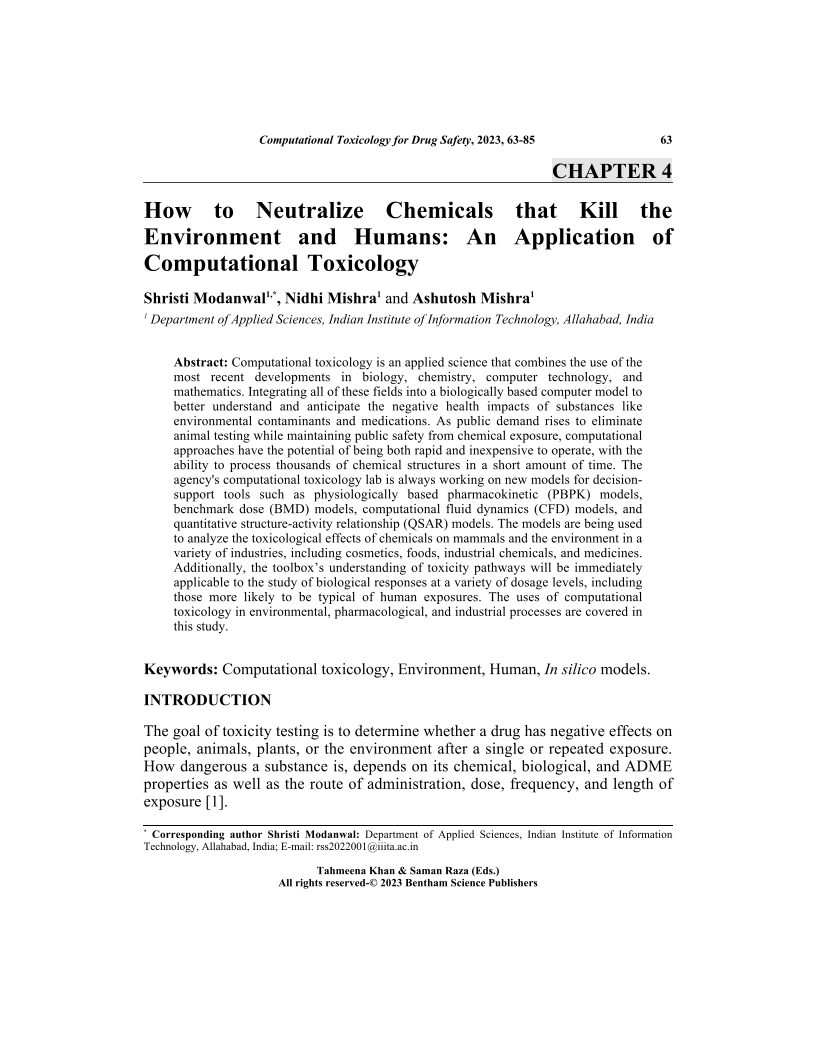How to Neutralize Chemicals that Kill the Environment and Humans: An Application of Computational Toxicology

- Authors: Shristi Modanwal1, Nidhi Mishra2, Ashutosh Mishra3
-
View Affiliations Hide Affiliations1 Department of Applied Sciences, Indian Institute of Information Technology, Allahabad, India 2 Department of Applied Sciences, Indian Institute of Information Technology, Allahabad, India 3 Department of Applied Sciences, Indian Institute of Information Technology, Allahabad, India
- Source: Computational Toxicology for Drug Safety and a Sustainable Environment , pp 63-85
- Publication Date: December 2023
- Language: English
How to Neutralize Chemicals that Kill the Environment and Humans: An Application of Computational Toxicology, Page 1 of 1
< Previous page | Next page > /docserver/preview/fulltext/9789815196986/chap4-1.gif
Computational toxicology is an applied science that combines the use of the most recent developments in biology, chemistry, computer technology, and mathematics. Integrating all of these fields into a biologically based computer model to better understand and anticipate the negative health impacts of substances like environmental contaminants and medications. As public demand rises to eliminate animal testing while maintaining public safety from chemical exposure, computational approaches have the potential of being both rapid and inexpensive to operate, with the ability to process thousands of chemical structures in a short amount of time. The agency's computational toxicology lab is always working on new models for decision support tools such as physiologically based pharmacokinetic (PBPK) models, benchmark dose (BMD) models, computational fluid dynamics (CFD) models, and quantitative structure-activity relationship (QSAR) models. The models are being used to analyze the toxicological effects of chemicals on mammals and the environment in a variety of industries, including cosmetics, foods, industrial chemicals, and medicines. Additionally, the toolboxs understanding of toxicity pathways will be immediately applicable to the study of biological responses at a variety of dosage levels, including those more likely to be typical of human exposures. The uses of computational toxicology in environmental, pharmacological, and industrial processes are covered in this study.<br>
-
From This Site
/content/books/9789815196986.chap4dcterms_subject,pub_keyword-contentType:Journal -contentType:Figure -contentType:Table -contentType:SupplementaryData105

